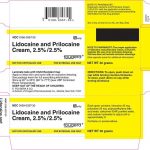
Contents
- 1 Low Blood Sugar: Symptoms, Dangers, & Treatment
Low Blood Sugar: Symptoms, Dangers, & Treatment
Hypoglycemia, or low blood sugar, is a syndrome resulting from low blood sugar levels. The severity and symptoms of hypoglycemia vary from person to person. Blood tests can diagnose low blood sugar, and symptoms resolve when blood sugar levels return to the normal range. Blood sugar is also known as blood glucose.
QUESTION
What are the symptoms and signs of low blood sugar?
The normal range of glucose in the bloodstream when fasting is 70 to 100 mg/dL. The body’s response to hypoglycemia usually starts when blood sugar levels are in the 70’s. At this point, the liver releases its glucose stores and the hormones mentioned above start to activate. This process often occurs without any clinical symptoms. Insulin production declines to prevent further drop in glucose.
Most people will develop symptoms of low blood sugar when blood glucose levels are lower than 50 mg/dL. The first set of symptoms are called adrenergic symptoms because they relate to the nervous system’s response to hypoglycemia.
People with hypoglycemia may experience the following symptoms:
- Nervousness
- Sweating
- Intense hunger
- Dizziness or lightheadedness
- Trembling
- Weakness
- Palpitations
- Trouble speaking
- Pallor
- Trouble concentrating
- Irritability
- Changes in behavior or personality
- Seizures
- Unconsciousness
These symptoms are easily recognizable in most people. Individuals with diabetes may only experience this degree of hypoglycemia if they are on medications or insulin. People with high insulin levels who fast or change their diet to lower their carbohydrate intake should also be cautious as they may experience modest hypoglycemia.
People being treated for diabetes who experience hypoglycemia may not experience symptoms as easily as people without diabetes. This phenomenon is known as hypoglycemic unawareness. Blood sugars may reach extremely low levels before any symptoms are perceived.
Anyone who has experienced an episode of hypoglycemia knows the importance of resolving the symptoms. The symptoms act as warning signs to tell the body to consume more fuel. At this level, the brain can still access circulating glucose for fuel. The symptoms provide an opportunity to raise blood glucose levels before the brain is affected.
If a person does not or cannot raise blood glucose levels, glucose levels continue to drop. With further drops, patients progress to neuroglycopenic ranges, meaning that the brain is not getting enough glucose. Symptoms progress to confusion, drowsiness, changes in behavior, coma, and seizure.
Why is low blood sugar dangerous?
When blood glucose levels fall, the brain senses the drop and triggers a series of events to increase blood glucose. Insulin secretion decreases and hormones that promote higher blood glucose levels increase. In addition, the body alerts the affected person that it needs food by causing symptoms of hypoglycemia.
The brain depends almost exclusively on glucose for fuel. If the glucose level in the blood falls or the brain’s requirements increase without enough glucose provided, there can be effects on brain function.
Risk factors for low blood sugar include type 1 or 2 diabetes or prediabetes.
Despite advances in diabetes treatment, low blood sugar episodes often limit optimal blood sugar control. Many medications effective in treating diabetes carry the risk of lowering blood sugar too much. In studies on tight control of blood sugar, low blood sugars occurred more often in patients with intensive management. Close monitoring of blood sugar levels is important to achieve the goal of tight blood sugar control.
What causes low blood sugar?
Low blood sugar episodes occur as a side effect of many treatments for diabetes. These episodes often limit optimal blood sugar control because many diabetes medications carry the risk of lowering blood sugar levels too much.
In studies on tight control of blood sugar, low blood sugars occurred more often in patients with intensive management. This is important to recognize as the goal for treating patients with diabetes becomes tighter control of blood sugar.
True hypoglycemia usually occurs in people with diabetes (type 1 or type 2). People with prediabetes or insulin resistance can also experience low blood sugars if their high insulin levels are further challenged by a prolonged period of fasting. Other rare causes include insulin-producing tumors and certain medications.
Subscribe to MedicineNet’s Diabetes Newsletter
By clicking "Submit," I agree to the MedicineNet Terms and Conditions and Privacy Policy. I also agree to receive emails from MedicineNet and I understand that I may opt out of MedicineNet subscriptions at any time.
What drinks and foods raise blood sugar fast?
Managing low blood sugar involves rapidly delivering a source of easily absorbed sugar. Good options include regular soft drinks, juice, lifesaver candies, table sugar, and the like. Typically, 15 grams of glucose is given, followed by an assessment of symptoms and a blood glucose check if possible. If there is no improvement after 10 minutes, another 10-15 grams should be given. This can be repeated up to three times. If there is still no response, an ambulance should be called.
The equivalent of 10-15 grams of glucose are:
- 4 lifesavers
- 4 teaspoons of sugar
- 1/2 can of regular soda or juice
Treating low blood sugar with dietary treats like cake, cookies, and brownies is not recommended. Complex carbohydrates or sugar combined with fat and protein are too slowly absorbed to be useful in acute treatment.
After treating the acute episode, a healthy, long-acting carbohydrate should be consumed to maintain blood sugar levels in the appropriate range. Half a sandwich is a reasonable option.
If the hypoglycemic episode progresses to the point where the patient cannot or will not eat, more drastic measures will be needed. Essentially, an ambulance should be called if glucose cannot be administered.
With a history of recurrent hypoglycemic episodes, it is important to assess whether it is related to medications or insulin treatment. Checking blood glucose values multiple times a day can help determine whether there is a pattern related to meals or medications. Lifestyle changes, such as eating multiple small meals and frequent small snacks throughout the day, may be beneficial for some individuals.
What else can you do to control blood sugar levels?
People with diabetes should wear identification stating their condition and whether they have recurrent low blood sugar. At-risk individuals should check blood sugars before driving or engaging in physically taxing activities.
It is important to carry a quick-acting glucose source at all times, in the car, office, and by the bedside. Efforts should be made to minimize the effects of drug regimens and to avoid variable surges in exercise, activity, and alcohol consumption.


